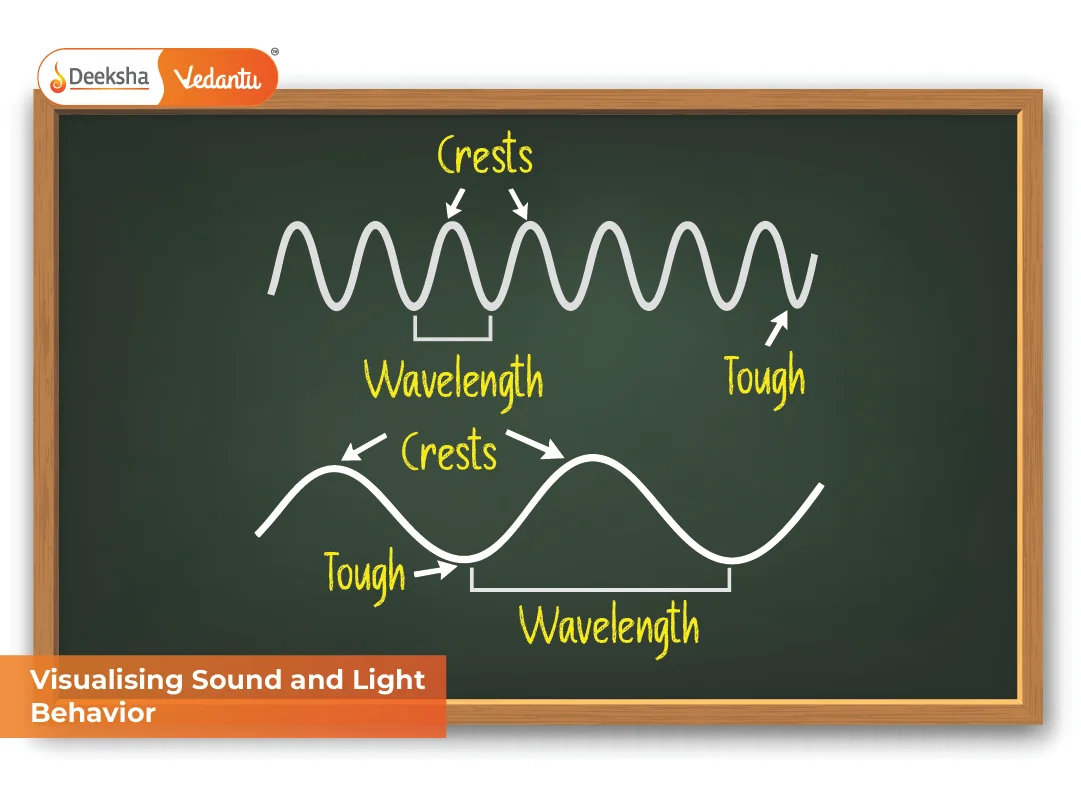Sound and light are two fundamental ways through which we perceive and understand our environment. These energy forms influence everything from the way we communicate to how we experience colors, music, and even safety. Though both sound and light travel in waves, they differ significantly in properties, speed, interaction with materials, and behavior under various conditions.
From colorful rainbows and the red hue of sunsets to echoes in vast canyons and the design of soundproof rooms, the behavior of sound and light waves shapes our daily experiences in subtle and profound ways. By learning how these waves behave, we gain deeper insights into the physics behind many natural and man-made phenomena.
This detailed guide covers:
- Key properties of sound waves
- The reflection of light and sound
- Diffraction and refraction and how they differ
- A detailed comparison between light and sound
- Real-world examples and usage
- Interactive examples and a sample physics problem
- Concept-based FAQs to deepen understanding
Let’s dive in!
What Are Waves?
Waves are repeating disturbances or vibrations that transfer energy from one point to another. They carry energy without transporting matter. Both sound and light travel in the form of waves, but their mechanisms and effects are quite different.
- Sound waves are mechanical and longitudinal waves. This means they need a medium (solid, liquid, or gas) to travel and move by compressing and rarefying particles along the direction of wave propagation.
- Light waves are electromagnetic and transverse waves. They do not need a medium and can even travel through the vacuum of space. Their oscillations occur perpendicular to the direction of wave travel.
Understanding this distinction is key to grasping why sound cannot travel through space but light can.
Properties of Sound Waves
Sound waves have five important properties that influence how we hear and experience sound:
1. Frequency (Pitch)
- Measured in Hertz (Hz), frequency determines how high or low a sound is.
- A high-frequency wave (e.g., a whistle) has a high pitch, while a low-frequency wave (e.g., a drumbeat) has a low pitch.
2. Amplitude (Loudness)
- Loudness depends on the amplitude of the wave.
- Greater amplitude = louder sound. It’s measured in decibels (dB).
3. Wavelength
- This is the distance between two successive compressions or rarefactions.
- It determines how sound interacts with obstacles and contributes to phenomena like diffraction.
4. Speed of Sound
- Varies based on the medium:
- In air: ~343 m/s
- In water: ~1500 m/s
- In steel: ~6000 m/s
- Sound travels faster in solids and slower in gases due to particle density.
5. Reflection of Sound
- When sound hits a surface and bounces back, it creates an echo.
- Applications include:
- SONAR (used in submarines)
- Echolocation (used by bats and dolphins)
- Design of concert halls and auditoriums
🔗 Learn how to reduce unwanted sound: Noise Pollution Prevention
Behavior of Light Waves
Light is unique because it behaves like both a wave and a particle (wave-particle duality). Let’s explore its wave-like properties:
1. Reflection of Light
Reflection occurs when light bounces off a surface. There are two types:
- Regular Reflection: From smooth surfaces like mirrors (forms clear images)
- Diffuse Reflection: From rough surfaces (scatters light, no image)
Laws of Reflection:
- The angle of incidence = angle of reflection
- The incident ray, reflected ray, and normal lie in the same plane
Applications:
- Plane mirrors, periscopes, automobile headlights, solar reflectors
🔗 Explore how prisms reflect and refract light →
2. Refraction of Light
Refraction is the bending of light when it travels from one medium to another (like from air to water).
- Light bends toward the normal when entering a denser medium
- Light bends away from the normal when entering a rarer medium
Real-World Examples:
- A pencil appears bent when placed in water
- Glasses, magnifying lenses, and camera lenses
- Mirage formation on hot roads
🔗 Atmospheric Refraction Explained
3. Dispersion of Light
Dispersion is the splitting of white light into its constituent seven colors (VIBGYOR) due to different refraction angles.
Example:
- Rainbow formation when sunlight passes through raindrops
🔗 Dispersion of White Light by a Glass Prism
4. Scattering of Light
Scattering is the redirection of light by small particles in the atmosphere. It explains many natural visuals:
- Blue Sky: Short-wavelength blue light is scattered more than red
- Red Sunsets: Sunlight travels a longer path and scatters blue, leaving red
- Foggy Headlights: Fog scatters light, making it harder to see far
Diffraction and Refraction: What’s the Difference?
While both involve wave interaction with boundaries, they are fundamentally different:
Refraction
- Bending of waves at a boundary between two media
- Changes direction and speed
- Seen in lenses, water surfaces, and atmospheric layers
Diffraction
- Spreading of waves when passing through an opening or around obstacles
- More prominent in sound due to its longer wavelength
- Allows you to hear around walls even if you can’t see around them
Examples of Diffraction:
- Whispering gallery effect
- Sound reaching behind a pillar
- Light diffraction on CDs or through narrow slits
Light and Sound Comparison Table
| Property | Light | Sound |
| Type of Wave | Electromagnetic (transverse) | Mechanical (longitudinal) |
| Needs Medium? | No | Yes |
| Speed in Air | ~3 × 10⁸ m/s | ~343 m/s |
| Can Travel in Vacuum? | Yes | No |
| Reflection | Mirrors, shiny surfaces | Echoes, sonar |
| Refraction | Lenses, prism, water surfaces | Sound bending near walls |
| Diffraction | Minimal, noticeable with fine slits | Very noticeable around corners |
| Frequency Range | Extremely wide (Radio to Gamma) | 20 Hz to 20,000 Hz |
| Applications | Optics, communication, imaging | Music, navigation, diagnostics |
Real-World Applications of Light and Sound Behavior
Sound
- Ultrasound imaging in medical diagnostics
- Sonar technology for marine navigation
- Architectural acoustics for auditorium design
- Noise cancellation headphones
- Seismic wave detection for earthquakes
Light
- Fiber-optic communication for high-speed internet
- Laser surgery and laser cutting in industries
- Spectroscopy in chemical analysis
- Solar panels and photovoltaic cells
- Traffic lights and night-vision systems
Sample Problem: Refraction of Light
Problem: A ray of light moves from air (n = 1) into water (n = 1.33) at an angle of 45°. What is the angle of refraction?
Solution: Use Snell’s Law:
So, the light ray bends toward the normal at about 32°.
FAQs
Q1. Why do we hear sound around corners but can’t see around them?
Because sound diffracts (bends around corners) due to its long wavelength, while light has a very short wavelength and travels in straight lines.
Q2. What causes a rainbow?
A rainbow is caused by refraction, internal reflection, and dispersion of sunlight in raindrops.
Q3. How does SONAR use sound waves?
SONAR systems emit sound pulses and calculate the distance to underwater objects based on the time taken for echoes to return.
Q4. Can light waves diffract like sound?
Yes, but it’s only noticeable when light passes through very narrow slits or fine gratings, such as in diffraction experiments.
Q5. Why is understanding wave behavior important in science?
Because it forms the basis for numerous technologies, including medical imaging, communication, environmental monitoring, and more.
Conclusion
Understanding the complex behavior of light and sound gives us insight into both natural phenomena and engineered technologies. Whether it’s enjoying music, viewing a 3D movie, or navigating using GPS, wave behavior is all around us. By mastering these principles, students can apply physics concepts to real-life situations and future innovations.
Table of Contents










Get Social